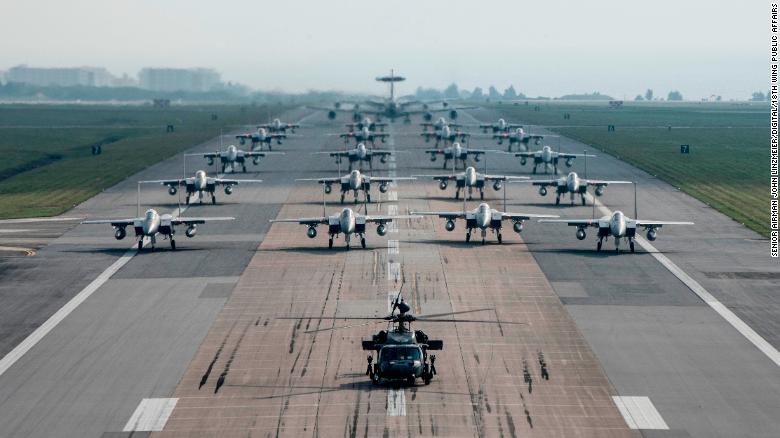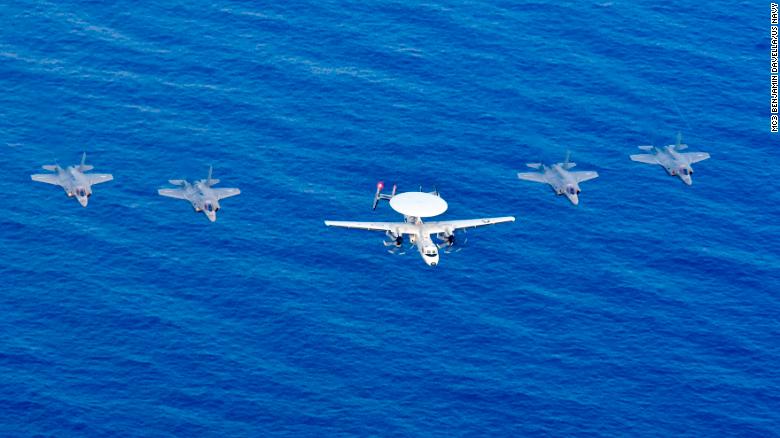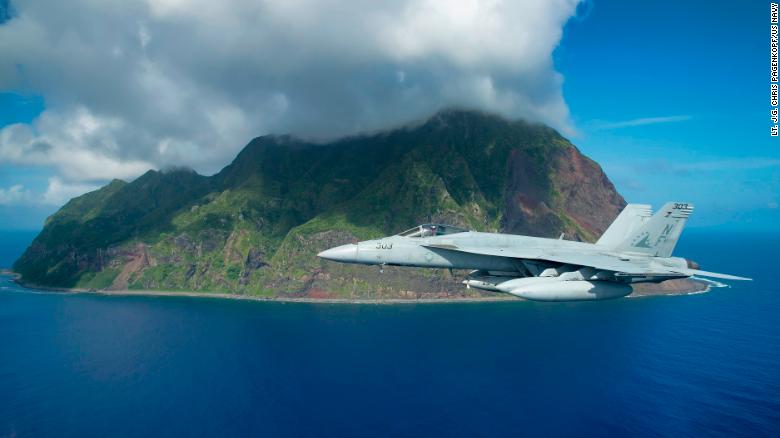Japanese island could become an unsinkable US aircraft carrier
Hong Kong Three square miles of volcanic rock on the edge of the East China Sea may one day be used as an unsinkable aircraft carrier for the United States Navy in the event of war in Asia.
Japan’s government announced this week that it’s buying Mageshima Island, an uninhabited outcrop 21 miles (34 kilometers) from the southernmost Japanese main island of Kyushu. The island, most of which is owned by a privately held Tokyo development company, is uninhabited and hosts two intersecting unpaved runways that were abandoned under a previous development project.
The Japanese government said the runways will be paved and used for US Navy and Marine Corps planes to simulate aircraft carrier landings, though it did not give a time frame in which that could be accomplished as the deal still needs to be finalized.
But once suitable facilities are constructed, the island could also become a permanent base for Japan’s Self Defense Forces as Tokyo looks to strengthen its position along the East China Sea, where it faces competing claims from China over the Japanese-administered Senkaku islands, known as the Diaoyu islands in Chinese.
The “purchase of Mageshima Island is extremely important and serves for strengthening deterrence by the Japan-US alliance as well as Japan’s defense capability,” Japanese Chief Cabinet Secretary Yoshihide Suga said in announcing the deal.
US military officials in Japan said they could not comment on the purchase. Buying Mageshima has been the subject of talks for years. Tasuton Airport, the company that owns most of the island, finally reached agreement with the government in late November.
The island was identified as a suitable site for use by the US as a permanent base for field carrier landing practice under a 2011 agreement outlining the realignment of US forces in Japan.
Spreading out US forces
The $146 million deal also comes as the US military is hearing calls to increase the number of its strategic bases in East Asia in the face of a growing Chinese missile arsenal.
The majority of US combat air forces in Japan are concentrated in just six bases.
Recent studies, including one from the United States Study Center at the University of Sydney published in August, say with their current resources the US forces would be vulnerable to Chinese missile strikes early in any conflict.
One way to mitigate that is to spread US troops and assets out among more bases.
“Over time, the diversification of Japanese and American bases (individual or joint) will be a trend,” said Corey Wallace, an Asia security analyst at Freie University in Berlin. “The alliance would be more resilient if bases and hardware were more dispersed.”
The theory goes, the more bases you have, the more missiles an adversary would need to fire to overwhelm its target and gain an advantage in a combat scenario.
Permanent land bases are considered more valuable than aircraft carriers, because they can withstand a great number of munitions. In theory, a carrier can be taken out with a single missile or torpedo.
Battle damage to land bases can also be repaired much more quickly than a complex war machine like an aircraft carrier.
“When you target and sink an aircraft carrier it is irreversible,” said Collin Koh, research fellow at the S. Rajaratnam School of International Studies in Singapore.
As for an island? “At the very least it doesn’t sink…. You can take the time and effort to bring it back to operation again,” Koh said.
Kinks in US-Japan defense relations
The new base is also a good sign for US-Japan defense cooperation, which has seen strains in recent years on two fronts: Localities have put pressure on the Japanese government to move US military activity away from population centers; and US President Donald Trump has pushed allies like Japan to take some financial load off US taxpayers.








